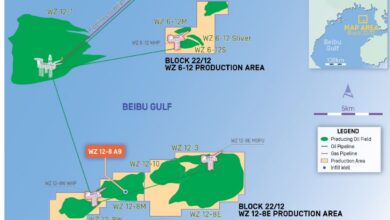Revolutionary two-cone bit to get ASME historical designation
 Baker Hughes Incorporated announced today that the American Society of Mechanical Engineers (ASME) will designate the Hughes Christensen two-cone drill bit as a Historic Mechanical Engineering Landmark. The designation will be presented during a ceremony at the Baker Hughes drill bit technology facility in The Woodlands, Texas, on 10 August – the 100th anniversary of the two-cone drill bit patent. An early production two-cone drill bit will be permanently displayed in the lobby at this facility.
Baker Hughes Incorporated announced today that the American Society of Mechanical Engineers (ASME) will designate the Hughes Christensen two-cone drill bit as a Historic Mechanical Engineering Landmark. The designation will be presented during a ceremony at the Baker Hughes drill bit technology facility in The Woodlands, Texas, on 10 August – the 100th anniversary of the two-cone drill bit patent. An early production two-cone drill bit will be permanently displayed in the lobby at this facility. 
The Hughes Christensen two-cone bit replaced
the traditional fishtail bit in the early 1900s.
“The Hughes two-cone drill bit launched Hughes Tool Company. Perhaps more important, many experts view it as a key technology that ushered in a new era of abundant, inexpensive fuel and laid the foundation for Henry Ford’s successful Model-T and the automobile age,” said Scott Schmidt, president of the Hughes Christensen product line.
Prior to 1909, the traditional fishtail bit scraped the rock and quickly dulled in service. The two-cone bit’s rolling action crushed hard-rock formations, allowing drillers to tap vast oil reservoirs deep below the surface.
The ASME History and Heritage Landmarks Program began in 1971 and has designated nearly 250 landmarks as historic mechanical engineering landmarks, heritage collections or heritage sites. Each represents a progressive step in the evolution of mechanical engineering and its significance to society.




